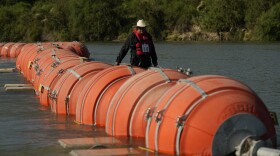Nearly 70% of South Bay households interviewed in a U.S. Centers for Disease Control and Prevention survey believed one or more members of the household had a health symptom from the Tijuana River sewage crisis, it was revealed Thursday.
Additionally, 80% believed their quality of life was negatively impacted, 67% believed their health had gotten worse since the problem rapidly worsened in recent years and 18% had sought medical care as a result of the sewage crisis.
The results of that CDC survey, the Community Assessment for Public Health Emergency Response or CASPER, were released Thursday. Over three days in October 2024, surveyors visited 480 homes in South Bay communities. Of those visited, 333 answered the door and 189 agreed to be interviewed.
Despite the smaller sample range, researchers said the homes were in "select clusters" intended to be representative of the area.
"We are grateful to all the residents who took part in the CASPER survey and for the partnership with the CDC in getting this done," said Dr. Ankita Kadakia, county interim public health officer. "These results validate the concerns residents of the South Bay have been voicing and the real impacts the sewage contamination is having on people's lives, physical and mental health.
"Collecting this information represents an important step forward in strengthening our collaboration with local, state and federal partners."
The most common health concerns reported were headache, nausea or upset stomach, cough and irritated throat.
Not surprisingly, considering more than 70% reported they could smell sewage inside their homes, and the problem got worse at night.
Other key findings from the survey included:
— 65% took extra steps to avoid certain areas like river water and beach water;
— 59% said their overall stress increased; and
— 28% said they changed their drinking water source since the sewage crisis began.
The county responded to the findings with recommendations to scientists and elected officials, including using social media to share resources, educating how the drinking water is tested to be safe, promoting mental health resources and working with local veterinarians on pet health issues.
Shortly following the CASPER survey, the federal Assessment of Chemical Exposure survey from the CDC's Agency for Toxic Substances and Disease Registry was completed in November 2024. It asked 2,150 San Diegans who spend time around the Tijuana River Valley and South San Diego County about the effects of being near contamination.
Those results should be available in the next couple of months, a county statement read.
The complete results of the survey can be found at the San Diego County Health & Human Services Agency website.







